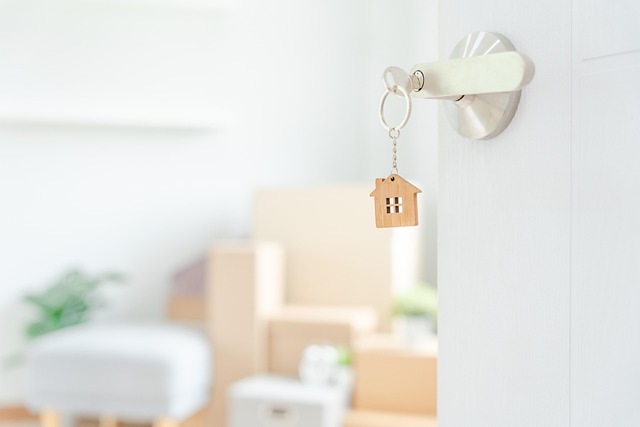Understanding your region's climate and geographical risks is vital for preparing your home against natural disasters. Focus on storm-proofing key areas like windows, doors, and the exterior to enhance home weather protection. Upgrades such as impact-resistant windows, storm shutters, and storm-proof doors significantly reduce structural damage from high winds and debris. Implementing robust construction techniques and materials, including reinforced roofs and weather-resistant cladding, creates a disaster-proof home, offering peace of mind and safeguarding your investment during unpredictable storms. A comprehensive approach to natural disaster preparedness includes these measures for enhanced resilience and security.
In the face of increasingly frequent and severe natural disasters, safeguarding your home and family is paramount. This comprehensive guide offers expert advice on fortifying your property against the elements. From understanding regional threats to implementing essential upgrades like storm-proof doors and windows, and even exploring the benefits of storm shutters, we equip you with the knowledge for a weather-resistant home. Additionally, we delve into resilient construction methods and crucial preparedness strategies for comprehensive natural disaster protection and peace of mind.
- Understanding Your Region's Threat: Assessing Risk for Effective Storm-Proofing
- Essential Upgrades for a Weather-Resistant Home: From Windows to Doors
- The Role of Shutters: Protecting Against High Winds and Debris
- Building Resilience: Key Considerations for Constructing a Disaster-Proof Home
- Preparedness Beyond Upgrades: A Comprehensive Guide to Natural Disaster Readiness
Understanding Your Region's Threat: Assessing Risk for Effective Storm-Proofing

Understanding the specific threats posed by your region’s climate and geographical features is the first step in ensuring your home is disaster-proof. Different areas are susceptible to varying types of natural disasters, from hurricanes and tornadoes to earthquakes or flash floods. Assessing these risks allows you to make informed decisions about storm-proofing measures such as installing weather-resistant home upgrades like storm shutters, disaster-proof windows, and storm-proof doors.
This proactive approach involves evaluating your property’s vulnerability to potential damage caused by severe weather conditions. By prioritizing areas most at risk, you can focus on implementing the most effective home weather protection strategies. Resilient home construction techniques and features designed to withstand high winds, heavy rainfall, or seismic activity will ensure that your home remains a safe haven during unpredictable natural disasters.
Essential Upgrades for a Weather-Resistant Home: From Windows to Doors

When preparing for natural disasters, enhancing your home’s weather resistance is paramount. One of the most vulnerable points in any structure are windows and doors. Upgrading to storm-proof windows and doors is a crucial step towards creating a disaster-proof home. These upgrades can significantly reduce the risk of structural damage caused by high winds and flying debris during severe storms.
Consider investing in impact-resistant or hurricane-rated windows, which are designed to withstand extreme conditions. Additionally, fitting storm shutters over windows provides an extra layer of protection. For doors, opt for models that have been tested for resilience against strong winds. Storm-proof doors, much like their window counterparts, can be a significant barrier against nature’s fury, ensuring your home remains safe and secure during natural disaster events.
The Role of Shutters: Protecting Against High Winds and Debris

When preparing for natural disasters, especially those with high wind speeds and flying debris, one often overlooked yet critical component is storm-proofing your home’s exterior. A robust defense against these elements involves installing weather-resistant home upgrades such as storm shutters and disaster-proof windows. These barriers act as a shield, protecting against broken glass and the destructive force of wind, which can be a matter of life or death during severe storms.
Storm shutters, in particular, are designed to withstand high winds and flying debris, providing an extra layer of defense for your home’s most vulnerable points—windows and doors. They are a key element in making your home disaster-proof, offering both physical protection and peace of mind. Consider them as part of your overall natural disaster readiness strategy, ensuring your home is equipped to withstand the harshest weather conditions.
Building Resilience: Key Considerations for Constructing a Disaster-Proof Home

When constructing or upgrading a home with an eye towards resilience, several key considerations can significantly enhance its ability to withstand and recover from natural disasters. Storm-proofing your abode is a multifaceted endeavor that starts with robust building practices. This includes using reinforced materials and construction techniques resistant to high winds, intense rainfall, and extreme weather conditions. For instance, opting for impact-resistant windows and doors, such as storm shutters or reinforced glass, can mitigate the risk of shattering during storms.
Furthermore, ensuring proper drainage systems, reinforcing roofs, and installing weather-resistant cladding are vital steps in creating a disaster-proof home. These measures not only protect against structural damage but also minimize water intrusion, which is a leading cause of indoor losses during hurricanes or heavy rainfall events. Investing in these storm-proofing upgrades can make a substantial difference in your home’s resilience, offering peace of mind and safeguarding your investment in the face of natural disasters.
Preparedness Beyond Upgrades: A Comprehensive Guide to Natural Disaster Readiness

Going beyond mere upgrades, comprehensive natural disaster preparedness involves a multifaceted approach to ensure your home is resilient against various weather events. Storm-proofing your abode starts with foundational elements like robust storm shutters and disaster-proof windows designed to withstand extreme winds and flying debris. These protective barriers are essential components of a weather-resistant home, safeguarding both structure and inhabitants during severe storms.
Additionally, consider the construction materials used in building or reinforcing your home. Opting for resilient home construction techniques and materials can significantly enhance your property’s ability to resist damage from natural disasters. This includes investing in storm-proof doors that provide a secure barrier against high winds and heavy rain. By implementing these measures, you’re taking proactive steps towards achieving a disaster-proof home, fostering a sense of security and peace of mind when facing unpredictable weather events.
In light of the diverse natural disasters that can affect our regions, it’s clear that a multi-faceted approach to protection is crucial. From understanding local threats and assessing risk to implementing essential upgrades like weather-resistant windows and storm-proof doors, every step contributes to building a resilient home. Incorporating features such as storm shutters not only fortifies your abode against high winds and debris but also enhances overall disaster preparedness. Ultimately, prioritizing storm-proofing and embracing resilient home construction methods are key components of ensuring safety and security during unpredictable weather events. Remember that being proactive in these areas can make all the difference when it comes to natural disaster protection.
